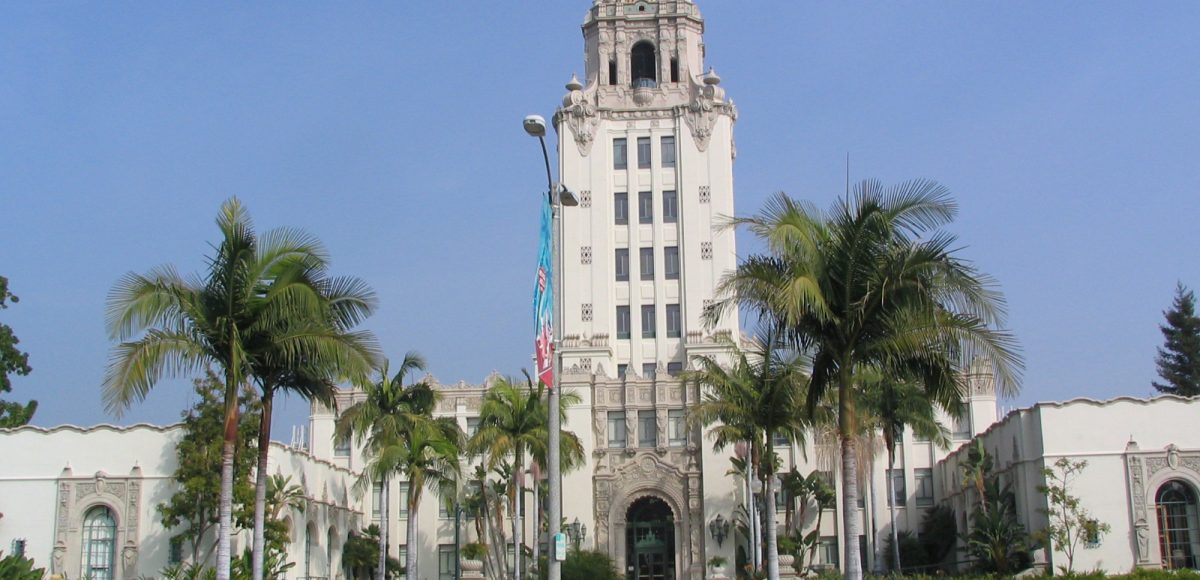Scores of people packed the Municipal Gallery at City Hall on Dec. 3 to discuss Beverly Hills’ effort to make people less reliant on cars via the Complete Streets Plan. The plan, which has been in development for nearly two years, is intended to make Beverly Hills a more mobility friendly city by taking a “complete streets” approach to reducing traffic in tandem with significantly augmenting bike lanes.
“It’s just a draft plan,” emphasized Traffic and Parking Commissioner Nooshin Meshakty, who together with her fellow four commissioners on the Traffic and Parking Commission (TPC) presided over Tuesday’s special meeting. “As a concerned city, we should consider, how do we want to deliver this city to the next generation?”
More than half of the 16 people called for public comment after Director of Community Development Susan Healy Keene offered a high-level view of the plan were residents concerned with how the current 170-page plan appeared to prioritize bike lanes at the expense of resident needs.
“You can see, and you certainly will see more tonight, people who live here who do not agree with the plan’s recommendations,” said Thomas White, Chairman of the Municipal League of Beverly Hills. “The heart of why we don’t have a full chamber of Beverly Hills residents protesting this, [is] because it’s called the Complete Streets Plan, not the Bicycle Utopia Plan or the Bicycle-centric Plan for Beverly Hills, as it should be.”
A core concern voiced by several speakers was that the creation of dedicated bike lanes on residential streets will create additional traffic that will impact the safety and convenience of the residents who live there.
Former Mayor Jimmy Delshad characterized the plan as a “Trojan horse,” in reference to the potential consequences that could enfold from removing car lanes and parking lanes in favor of bike lanes. The current plan designates various residential streets throughout the City, such as South Roxbury, which stand to lose half of its parking in order to create dedicated bike lanes.
“Why would we already designate streets without input from the public, input from residents?” questioned former Mayor Robert Tannenbaum, who currently serves as president of the Beverly Hills North Homeowners Association. “We care about maintaining the residential integrity of our streets, that matters to us.”
Keene said the City planned to do “extensive outreach” to those neighbors who would be impacted.
At last week’s meeting for the Sunshine Task Force a task force which was established to study measures to advance greater transparency and public involvement in local government operations community members criticized the City for failing to adequately inform a larger swath of residents about this week’s meeting to discuss the Complete Streets Plan.
In addition to establishing a comprehensive bike lane network that connects the City to its neighbors, the plan prioritizes infrastructure projects intended to encourage people to rely less on automobiles as their primary mode of transportation. It also takes into account evolving technologies (such as automated vehicles) and the two forthcoming subway stops Wilshire/ La Cienega in 2023 and Wilshire/Rodeo in 2025.
Local cycling enthusiast Mark Elliot, a frequent blogger on betterbike.org who was once struck by an automobile while cycling in Beverly Hills, praised the plan for making safety “a top concern.”
Commissioner David Seidel said that prior to the meeting, the commission had received 70 email responses, 63 of which supported the plan, as well as 22 online comments, all of which endorsed the plan.
“I guarantee you, this is not set in stone,” said TPC Chair Jay Sonit.
Another Town Hall type of special meeting led by the TPC on the Complete Streets Plan is slated to take place in January, although the date has yet to be set. After that, Solnit said the commission would meet in February to discuss the issue again with a revised plan likely going to City Council in April.







